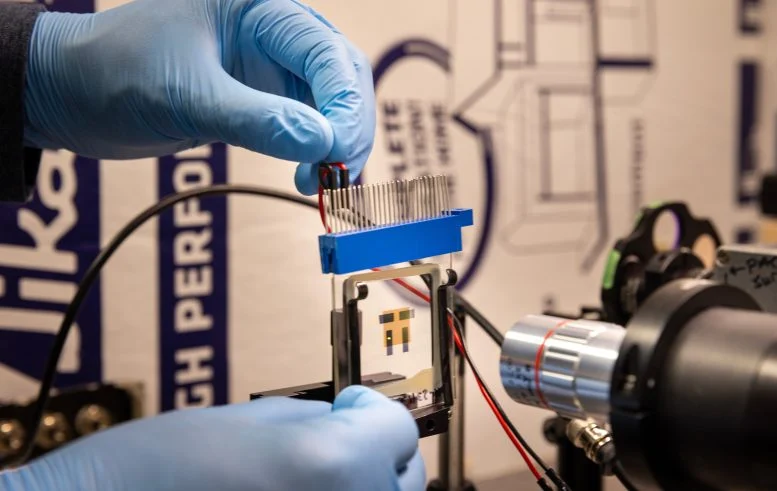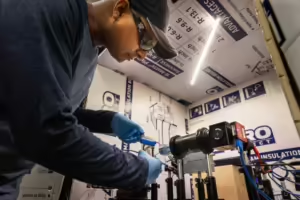University of Michigan researchers claim to have succeeded in creating a new type of OLED that can amplify near-infrared light. The objective of the research was to develop lightweight, energy-efficient night vision glasses, which could replace the current bulky, power-hungry night vision goggles.

Current night vision goggles are heavy and cumbersome, relying on high voltage and vacuum-based technology to convert near-infrared light into visible light. The new OLED technology seeks to address these limitations by offering a solution that is both compact and more power-efficient. The research also explores applications in computer vision systems that not only sense but also interpret incoming light signals. The integration of a memory-like effect in these OLEDs could improve computer vision systems, allowing for more sophisticated image processing.
The research team, led by Professor Chris Giebink and including postdoctoral researcher Raju Lampande, developed an OLED device that amplifies near-infrared light. The device comprises a photon-absorbing layer that converts infrared light into electrons and a five-layer OLED stack that converts those electrons into visible light photons.
The newly developed OLED device successfully converts and amplifies near-infrared light into visible light, achieving more than 100 times amplification without the need for heavy, high-voltage components. The device operates within a thin film stack less than a micron thick, drastically reducing its size compared to the traditional 50-micron-thick human hair. It exhibited a memory behavior known as hysteresis, where the light output depends on past light inputs. While this could pose challenges for night vision applications, it suggests potential for use in computer vision systems that mimic the human visual processing system.
The OLED was designed to operate using lower voltage compared to traditional night vision systems, reducing power consumption. A positive feedback loop mechanism within the OLED stack was integrated, amplifying the amount of output light for a given input. The project involved collaboration with OLEDWorks, the OLED lighting product manufacturer, and RTX, the aerospace and defense contractor. The technology is patent-pending, with the research originating at Penn State University before Giebink’s move to the University of Michigan. Funding was provided by DARPA.
Reference
Lampande, R., DesOrmeaux, JP.S., Pizano, A. et al. Positive-feedback organic light-emitting diodes and upconverters. Nat. Photon. (2024). https://doi.org/10.1038/s41566-024-01520-0

